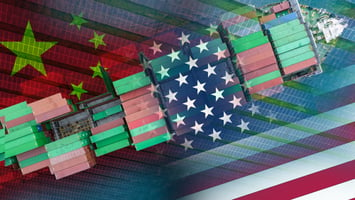Tariffs and Trade Tension: What You Should Be Asking (and Doing) in Your Business CEOs vary widely...
Navigating a New Era of Retail – Three Financial and Operational Factors
The market and operating environments of retail businesses have undergone dramatic transformations since the turn of the millennium; transformations that accelerated significantly more with the outset of the COVID pandemic. While some retailers have navigated these shifts to a point of better business health, others have struggled to maintain pace and keep their heads above water.
Here, we take a look at three factors driving continued shifts in the retail environment, what’s behind them, and considerations that retail business operators will have to contend with to move their businesses forward.
Coping with Inflation in Retail Environments
The impact of inflation on retail operations presents a new challenge for many (especially younger) finance and accounting professionals. That’s because inflation rates were relatively low and stable for roughly three decades until pandemic and post-pandemic pressures fueled their rise. During that prolonged period of inflationary stability, teaching aspiring finance and accounting professionals how to deal with inflation wasn’t an emphasis. Today, however, having access to finance expertise that knows how to traverse inflationary periods is imperative for retailers.
Another imperative for retailers, especially in inflationary periods, is timely and reliable KPI reporting. Inflation compels continual monitoring of financial and operational variables to support decision-making on what the business must do to maintain adequate margins and financial health. This includes determining whether one’s point-of-sale systems and data resources capture all the variables needed to assess profitability.
One of the first areas inflation-induced conversations often go to is whether or how to apply pricing increases or changes to offset the impact of rising costs. More factors must be considered. High inflation also manifests itself in diminished purchasing power for consumers. In turn, this has a ripple effect on retail labor with more workers needing to seek higher-paying jobs than what a retail environment typically offers. Retaining employees in an inflationary market is yet another cost that must be considered.
Inflation’s impact can be further compounded by other factors such as supply chain challenges. A recent example in the retail grocery space was the rapid rise in the price of eggs. Steep and rapid increases like this one, as well as on other staple items, have significantly different effects on grocery retailers with narrower selections versus those with broader varieties of higher-margin grocery and general merchandise items that can help them weather the storm.
Leveraging Technology in Retail Environments
The already sizable application of technology in retail spaces will increasingly grow as advances in video resolution and analysis, contactless shopping, augmented selling, and related areas continue to emerge. For finance and other business executives, a key challenge will rest in forming a reliable picture of whether implementing such technology is the right thing to do for their business and whether it would deliver a positive return on investment.
One area of advancement in retail environments over the past several years is the applications of video technology stemming from higher image resolution, lower hardware costs, and greater analytical processing power. While most are still leveraging video and biometric scanning for security purposes, some are beginning to use it to shed light on other areas such as traffic counts and patterns or to inform merchandising decisions. The days of an employee standing at a retailer’s door to clicker-count customers are largely behind us.
Technology is also fueling more changes in what many speak of as a retailer’s last mile or checkout stage as well as in other points of a shopper’s experience. The widest application of this is in stores like Amazon Go, where technology senses what products are being picked up from where and enables consumers to simply walk out of the store with their selections to trigger an automated purchase transaction.
Contending with New Costs and Changing Consumers
Adding to the market-influencing factors above are continually evolving consumers and consumer preferences. As consumers and their preferences evolve, so do the costs and considerations that stem from them.
One illustration of how changing preferences and habits impact retailers lies in how consumers travel to a store and the logistics of supporting them once they arrive. In recent years, most have noticed an increase in the number of retail parking spaces equipped with electric vehicle charging stations. Others incorporate lights or other indicators to guide customers to open parking spaces or direct traffic flow. Amenities such as these come at a cost, but affect the consumer experience positively.
Consumer preferences are also driving changes in distribution in terms of how products ultimately come into their possession. This typically comes in the form of hybrid buying environments where purchase transactions take place online while product receipt happens via curbside or in-store pickup or delivery. Retailers must be able to meaningfully weigh the costs and impacts of providing (or not providing) these options to their customers.
Riding the Retail Wave
The business and operational environment of the retail industry has undergone a sea change in recent years and continues to transform. Moving forward, success in the retail space will largely be shaped by how well retailers can navigate new and emerging financial and operational issues while still effectively managing traditional performance factors affecting their businesses. Key to this will be the ability to manage well through inflationary periods, balancing the right mix and application of technology, and accommodating new costs and consumer preferences.
—
Change brings opportunities as well as challenges. How can your retail business thrive in a rapidly changing environment? If you need help examining the many variables at play and their impact on your business as you develop the right plan to optimize your opportunities, request a free consultation from a vcfo expert who can help. We’ve partnered with more than 5,000 businesses in our 27 years and would love to share our expertise and experience with you.


